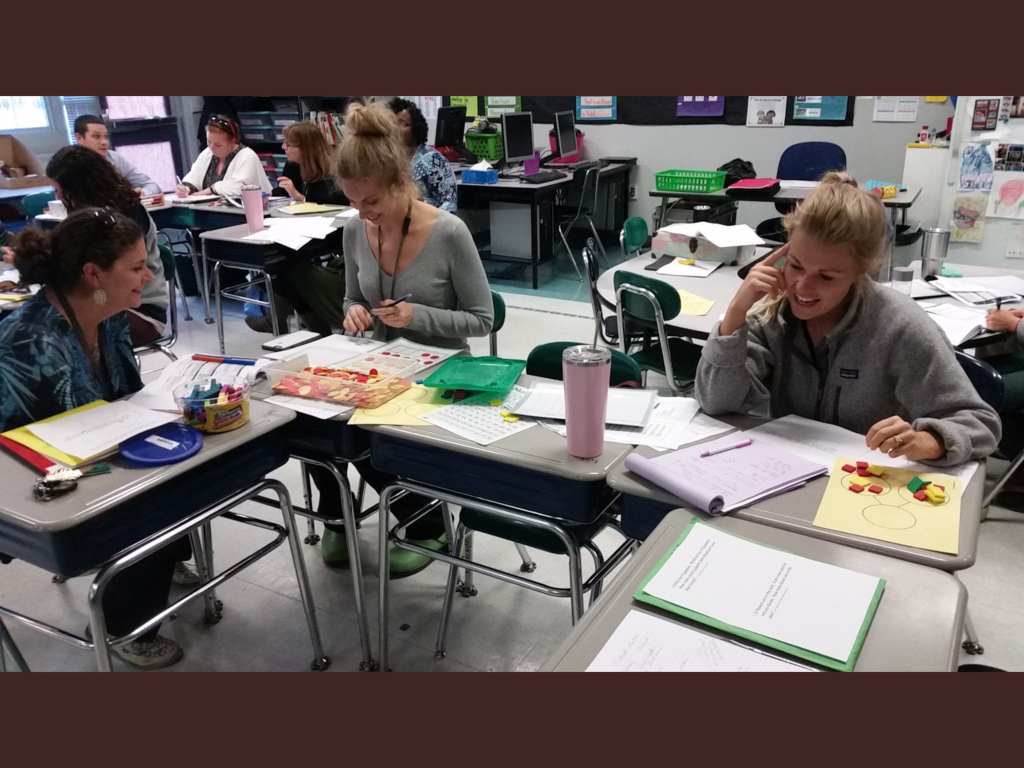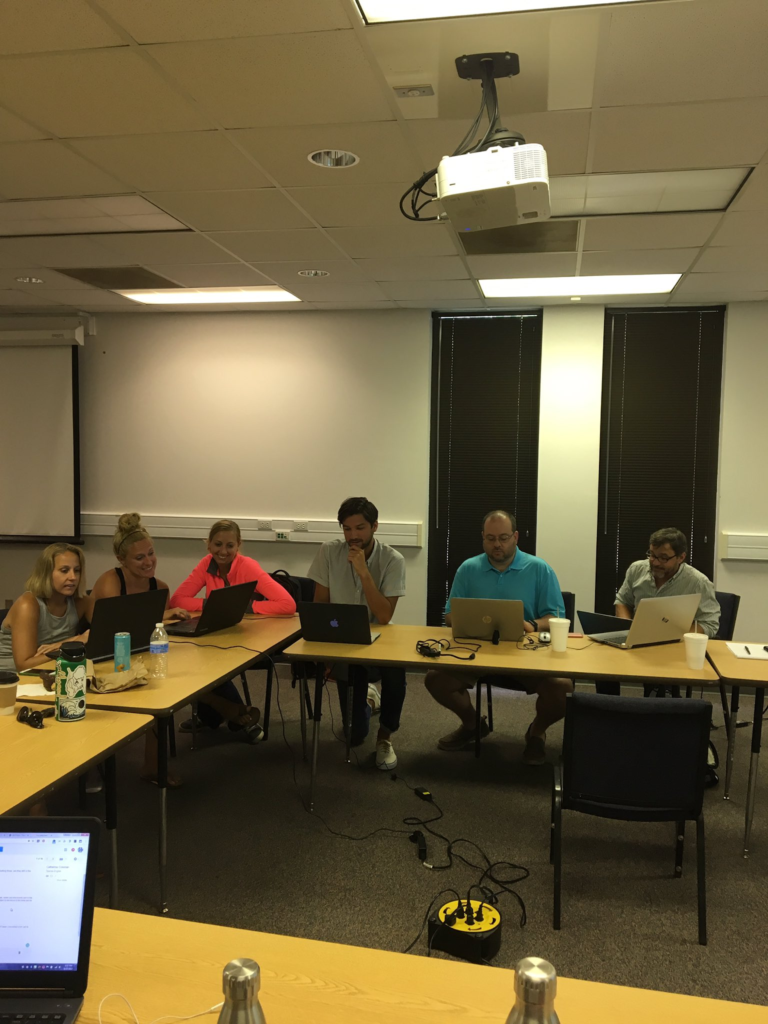I remember walking into my first classroom ten years ago, confidently envisioning how my classroom community would feel and look. However, this same confidence did not transfer to my understanding of the curriculum and standards that my students needed to master. More often than not, this dichotomy influences how teachers feel walking into their classrooms each school year. This confusion may be caused by different standards, new instructional materials, or changing grade levels. For the last two years, I have had the privilege of working with the beginning teachers within our district in Wilmington, North Carolina. Our beginning teachers enter into their schools and classrooms with an excitement that is beyond description. Unfortunately, with this excitement also comes a lack of awareness of what the academic year ahead of them will bring.
In my district, my counterpart and I have taken steps to build young teachers’ confidence through content-infused professional development. These professional development opportunities focus on marrying content with best instructional practices. We model and discuss instructional strategies while embedding time for content teachers to collaborate, connect, and apply their learning to specific standards and curriculum.
However, monthly teacher collaboration was clearly not enough time to help new teachers (or veteran teachers) truly explore their curriculum materials and improve their instruction. Most decisions about curriculum and instructional materials are made at individual school sites which often makes it difficult to embed specific materials into our district-wide professional development. Our focus then began to shift to how to support site-based instructional decisions within our schools.
Many of our local schools (elementary, middle, and high) have developed weekly designated times for these collaborative conversations based on district professional learning. Each grade level or department sends one representative to monthly content-specific professional development offered around the county. Those representatives are responsible for leading weekly or bi-weekly designated meetings in their schools to share information with their grade level or department. Independent sites discuss their specific data, vision, and available materials to implement these instructional strategies.

For example, our district has chosen to implement Singapore Math strategies. Through monthly county-level math professional development, teachers from all elementary schools are able to work together to examine not only the standards, but also determine how to ensure all students are mastering them. When teacher representatives then share with grade levels at their own schools, their colleagues can become part of the collaborative discussion, which can be aided by digital materials and resources that provide easy access for all teachers and their planning teams. The following week, teachers meet again to discuss standards implementation with their student evidence. This process helps ensure that materials and curriculum used to teach a standard actually help students master their learning.

Participating in these conversations as both facilitator and participant has enhanced more than my own content understanding: this more personalized PD has afforded me opportunities to see our teachers impacting student growth through their hard work applying professional learning. As with any professional development model, we saw resistance at first and there were often weeks that the conversation was not evidence-driven. At these times, discussion seemed to be based more on teachers’ personal feelings about certain curriculum and instructional materials. Fortunately, as teachers continued meeting, many of these barriers seemed to disappear. After improving their understanding of content-specific instructional programs, our teachers were inclined to implement and share both student evidence and the impact those materials were having in their classroom. And, once we see the impact on our students’ growth, it is hard to resist being part of the change!

When I think about the teachers with whom I work, I am often reminded of a George Couros quote, “If you want to be a master teacher you have to be a master learner.” In our district, teachers are beginning to exemplify this adage through their dedication to enhancing their subject resource knowledge. We have found success in providing teachers more time to understand curriculum while collaborating with others. Certainly, this supportive process has made change much less difficult for many teachers. Working together to learn how content-specific materials can improve instructional outcomes has brought about an important shift within our schools. We hope we are creating teachers who are becoming master learners.
















